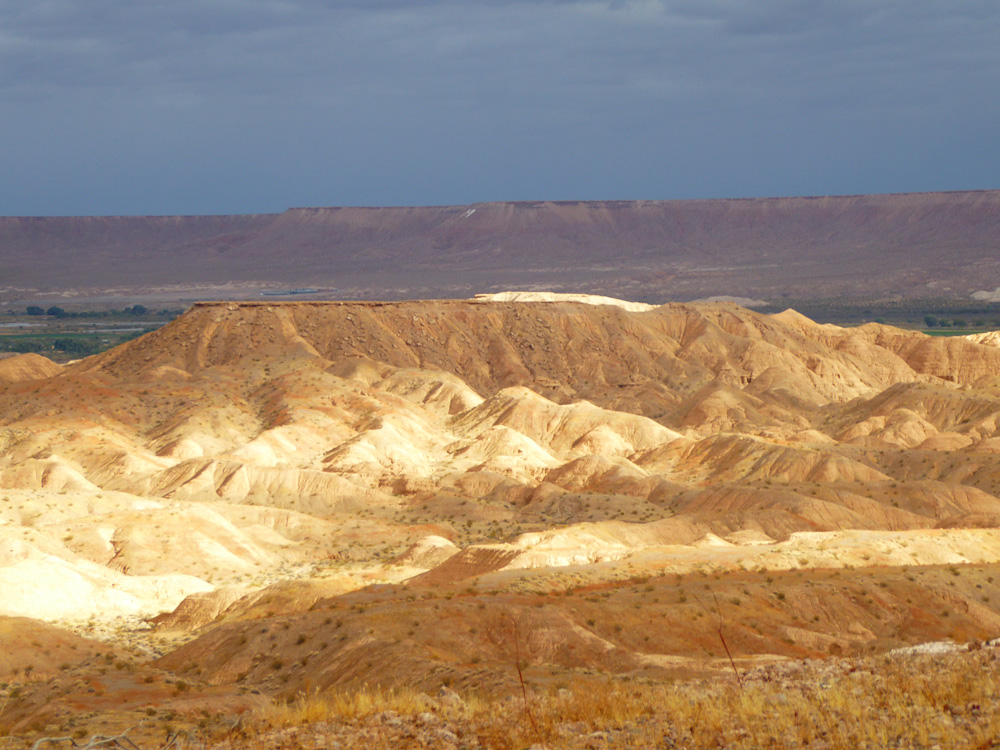A major solar installation hit a roadblock north of Las Vegas; California-based Arevia Power abandons plans for what would have been the largest array of solar panels in the United States.
The “Battle Born Solar Project” was slated for the top of Mormon Mesa, near the small communities of Logandale and Overton.
Arevia withdrew its application with the federal Bureau of Land Management; the BLM controls Mormon Mesa, which overlooks the scenic Moapa Valley.
Another California company involved in the project, Solar Partners VII LLC, also withdrew its application with the Bureau of Land Management.
“Save Our Mesa”
The California-based companies dropped their plans in response to vigorous opposition from Moapa Valley residents; all during 2020, “Save Our Mesa” signs and bumper stickers could be seen everywhere in the valley. While Arevia Power assured residents that its solar panels would not be visible from the valley, Logandale and Overton residents felt otherwise.
The Moapa Valley is known for its natural beauty and outdoor activities; residents felt that such a large installation would not only be unsightly but also prevent locals from enjoying the mesa they know and love. Moreover, it would deter out-of-town visitors who also enjoy the area.
The project planned to cover the entire Mormon Mesa, a whopping 9,000 acres, with solar panels. While some might see the mesa as wasted space, ripe for development, the rural communities see things differently.
“This is a special place, a unique place. There’s no place like this anywhere in America,” explained Moapa Valley resident, Lisa Childs. “The mesa is a very unique piece of land. But another issue that concerns me is the health issue and the human factors. We would be squeezed between two solar farms. There are no studies out there. There are not enough studies to say what this would do to our community.”
Childs did find research showing that so many solar panels could raise the surrounding temperature by 7.5 degrees; the Moapa Valley is not only a scenic desert but also home to rare, desert tortoises and wetlands. The environmental impact could be profound.
Harmful to the Local Economy
Finally, the solar project would have close many access roads to the mesa, restricting locals from hosting off-road races. Off-roading means tourist dollars to the Moapa Valley, and without the races, local hotels, gas stations, and other small businesses will lose income. The president of the Moapa Valley Chamber of Commerce, Vanette Christensen, said, “We’re rural, and we depend on tourist dollars for the survival of some of our local businesses. The impact of losing that could be extremely devastating.”
Rural Nevada vs Las Vegas
While a majority of the state’s voters, who reside in Las Vegas, agreed with an energy transition ballot question, they won’t have to live with it in their backyard.
While large solar projects power the lights of the Las Vegas Strip, they negatively impact rural areas of the state. They also draw criticism from conservationists, advocates for endangered species, and rural businesses that serve tourists.
The proposed solar plant would have covered more than 14 square miles of the scenic Mormon Mesa. While its 850-megawatt capacity could have provided daytime electricity to 500,000 Clark County homes, the benefit to local communities was negative.
United Nations Sustainable Development Goals for 2030
In 2020, Governor Steve Sisolak pleaded with federal officials to fast-track the solar project. Sisolak has signed the state on for a goal of 50% renewable energy, and he’s eager for the state could reach its 2030 sustainable energy goals. Currently, Nevada generates a little less than 30% of its utility-scale power from so-called renewable sources, such as solar.
Nevada fulfills much of its energy needs with sustainable hydroelectric power, such as that generated by Hoover Dam and Davis Dam, near Laughlin. The state also uses natural gas to generate power.
However, corporate developers are quickly increasing their solar investments in the rural areas north of Las Vegas. While corporate developers see dollar signs in the abundant sunshine and wide-open spaces, rural residents see an unwelcome encroachment. The fact is, any good-paying jobs that these projects might generate will not go to local residents; rather, corporations could import hundreds of people into rural communities that could ultimately profoundly impact local culture.
One source of renewable energy available in the state, besides environment-destroying solar and wind farms, is geothermal. Nevada is known for its hot springs; geothermal plants could have a far less environmental impact, compared to solar and wind.
Compared to solar and wind, geothermal energy is more reliable; it runs 24/7 without sunshine, windy days, or batteries. It only requires a single energy plant, not covering thousands of acres of land with environmentally detrimental solar panels and windmills.

